Discover Brain Inspired
Brain Inspired
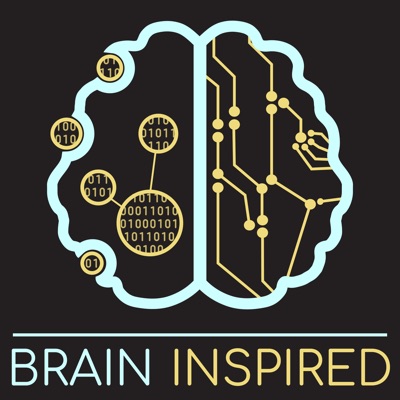
Brain Inspired
Author: Paul Middlebrooks
Subscribed: 1,563Played: 50,433Subscribe
Share
© 2019 Brain-Inspired
Description
Neuroscience and artificial intelligence work better together. Brain inspired is a celebration and exploration of the ideas driving our progress to understand intelligence. I interview experts about their work at the interface of neuroscience, artificial intelligence, cognitive science, philosophy, psychology, and more: the symbiosis of these overlapping fields, how they inform each other, where they differ, what the past brought us, and what the future brings. Topics include computational neuroscience, supervised machine learning, unsupervised learning, reinforcement learning, deep learning, convolutional and recurrent neural networks, decision-making science, AI agents, backpropagation, credit assignment, neuroengineering, neuromorphics, emergence, philosophy of mind, consciousness, general AI, spiking neural networks, data science, and a lot more. The podcast is not produced for a general audience. Instead, it aims to educate, challenge, inspire, and hopefully entertain those interested in learning more about neuroscience and AI.
140 Episodes
Reverse
Support the show to get full episodes, full archive, and join the Discord community.
The Transmitter is an online publication that aims to deliver useful information, insights and tools to build bridges across neuroscience and advance research. Visit thetransmitter.org to explore the latest neuroscience news and perspectives, written by journalists and scientists.
Read more about our partnership.
Sign up for Brain Inspired email alerts to be notified every time a new Brain Inspired episode is released.
To explore more neuroscience news and perspectives, visit thetransmitter.org.
Can you look at all the synaptic connections of a brain, and tell me one nontrivial memory from the organism that has that brain? If so, you shall win the $100,000 prize from the Aspirational Neuroscience group.
I was recently invited for the second time to chair a panel of experts to discuss that question and all the issues around that question - how to decode a non-trivial memory from a static map of synaptic connectivity.
Before I play that recording, let me set the stage a bit more.
Aspirational Neuroscience is a community of neuroscientists run by Kenneth Hayworth, with the goal, from their website, to "balance aspirational thinking with respect to the long-term implications of a successful neuroscience with practical realism about our current state of ignorance and knowledge." One of those aspirations is to decoding things - memories, learned behaviors, and so on - from static connectomes. They hold satellite events at the SfN conference, and invite experts in connectomics from academia and from industry to share their thoughts and progress that might advance that goal.
In this panel discussion, we touch on multiple relevant topics. One question is what is the right experimental design or designs that would answer whether we are decoding memory - what is a benchmark in various model organisms, and for various theoretical frameworks? We discuss some of the obstacles in the way, both technologically and conceptually. Like the fact that proofreading connectome connections - manually verifying and editing them - is a giant bottleneck, or like the very definition of memory, what counts as a memory, let alone a "nontrivial" memory, and so on. And they take lots of questions from the audience as well.
I apologize the audio is not crystal clear in this recording. I did my best to clean it up, and I take full blame for not setting up my audio recorder to capture the best sound. So, if you are a listener, I'd encourage you to check out the video version, which also has subtitles throughout for when the language isn't clear.
Anyway, this is a fun and smart group of people, and I look forward to another one next year I hope.
The last time I did this was episode 180, BI 180, which I link to in the show notes. Before that I had on Ken Hayworth, whom I mentioned runs Aspirational Neuroscience, and Randal Koene, who is on the panel this time. They were on to talk about the future possibility of uploading minds to computers based on connectomes. That was episode 103.
Aspirational Neuroscience
Panel
Michał Januszewski@michalwj.bsky.social
Research scientist (connectomics) with Google Research, automated neural tracing expert
Sven Dorkenwald
@sdorkenw.bsky.social
Research fellow at the Allen Institute, first-author on first full Drosophila connectome paper
Helene Schmidt@helenelab.bsky.social
Group leader at Ernst Strungmann Institute, hippocampus connectome & EM expert
Andrew Payne
@andrewcpayne.bsky.social
Founder of E11 Bio, expansion microscopy & viral tracing expert
Randal Koene
Founder of the Carboncopies Foundation, computational neuroscientist dedicated to the problem of brain emulation.
Related episodes:
BI 103 Randal Koene and Ken Hayworth: The Road to Mind Uploading
BI 180 Panel Discussion: Long-term Memory Encoding and Connectome Decoding
Support the show to get full episodes, full archive, and join the Discord community.
The Transmitter is an online publication that aims to deliver useful information, insights and tools to build bridges across neuroscience and advance research. Visit thetransmitter.org to explore the latest neuroscience news and perspectives, written by journalists and scientists.
Read more about our partnership.
Sign up for Brain Inspired email alerts to be notified every time a new Brain Inspired episode is released.
To explore more neuroscience news and perspectives, visit thetransmitter.org.
Tatiana Engel runs the Engel lab at Princeton University in the Princeton Neuroscience Institute. She's also part of the International Brain Laboratory, a massive across-lab, across-world, collaboration which you'll hear more about. My main impetus for inviting Tatiana was to talk about two projects she's been working on. One of those is connecting the functional dynamics of cognition with the connectivity of the underlying neural networks on which those dynamics unfold. We know the brain is high-dimensional - it has lots of interacting connections, we know the activity of those networks can often be described by lower-dimensional entities called manifolds, and Tatiana and her lab work to connect those two processes with something they call latent circuits. So you'll hear about that, you'll also hear about how the timescales of neurons across the brain are different but the same, why this is cool and surprising, and we discuss many topics around those main topics.
Engel Lab.
@engeltatiana.bsky.social.
International Brain Laboratory.
Related papers:
Latent circuit inference from heterogeneous neural responses during cognitive tasks
The dynamics and geometry of choice in the premotor cortex.
A unifying perspective on neural manifolds and circuits for cognition
Brain-wide organization of intrinsic timescales at single-neuron resolution
Single-unit activations confer inductive biases for emergent circuit solutions to cognitive tasks.
0:00 - Intro
3:03 - No central executive
5:01 - International brain lab
15:57 - Tatiana's background
24:49 - Dynamical systems
17:48 - Manifolds
33:10 - Latent task circuits
47:01 - Mixed selectivity
1:00:21 - Internal and external dynamics
1:03:47 - Modern vs classical modeling
1:14:30 - Intrinsic timescales
1:26:05 - Single trial dynamics
1:29:59 - Future of manifolds
Support the show to get full episodes, full archive, and join the Discord community.
The Transmitter is an online publication that aims to deliver useful information, insights and tools to build bridges across neuroscience and advance research. Visit thetransmitter.org to explore the latest neuroscience news and perspectives, written by journalists and scientists.
Read more about our partnership.
Sign up for Brain Inspired email alerts to be notified every time a new Brain Inspired episode is released.
To explore more neuroscience news and perspectives, visit thetransmitter.org.
Henk de Regt is a professor of Philosophy of Science and the director of the Institute for Science in Society at Radboud University. Henk wrote the book on Understanding. Literally, he wrote what has become a classic in philosophy of science, Understanding Scientific Understanding.
Henks' account of understanding goes roughly like this, but you can learn more in his book and other writings. To claim you understand something in science requires that you can produce a theory-based explanation of whatever you claim to understand, and it depends on you having the right scientific skills to be able to work productively with that theory - for example, making qualitative predictions about it without performing calculations. So understanding is contextual and depends on the skills of the understander.
There's more nuance to it, so like I said you should read the book, but this account of understanding distinguishes it from explanation itself, and distinguishes it from other accounts of understanding, which take understanding to be either a personal subjective sense - that feeling of something clicking in your mind - or simply the addition of more facts about something.
In this conversation, we revisit Henk's work on understanding, and how it touches on many other topics, like realism, the use of metaphors, how public understanding differs from expert understanding, idealization and abstraction in science, and so on.
And, because Henk's kind of understanding doesn't depend on subjective awareness or things being true, he and his cohorts have begun working on whether there could be a benchmark for degrees of understanding, to possibly asses whether AI demonstrates understanding, and to use as a common benchmark for humans and machines.
Google Scholar page
Social: @henkderegt.bsky.social;
Book:
Understanding Scientific Understanding.
Related papers
Towards a benchmark for scientific understanding in humans and machines
Metaphors as tools for understanding in science communication among experts and to the public
Two scientific perspectives on nerve signal propagation: how incompatible approaches jointly promote progress in explanatory understanding
0:00 - Intro
10:13 - Philosophy of explanation vs understanding
14:32 - Different accounts of understanding
20:29 - Henk's account of understanding
26:47 - What counts as intelligible?
34:09 - Hodgkin and Huxley alternative
37:54 - Familiarity vs understanding
44:42 - Measuring understanding
1:02:53 - Machine understanding
1:16:39 - Non-factive understanding
1:23:34 - Abstraction vs understanding
1:31:07 - Public understanding of science
1:41:35 - Reflections on the book
Support the show to get full episodes, full archive, and join the Discord community.
The Transmitter is an online publication that aims to deliver useful information, insights and tools to build bridges across neuroscience and advance research. Visit thetransmitter.org to explore the latest neuroscience news and perspectives, written by journalists and scientists.
Read more about our partnership.
Sign up for Brain Inspired email alerts to be notified every time a new Brain Inspired episode is released.
To explore more neuroscience news and perspectives, visit thetransmitter.org.
My guest today is Dan Nicholson, Assistant Professor of Philosophy at George Mason University, here to talk about his little book, What Is Life? Revisited. Erwin Schrödinger's What Is Life is a famous book that people point to as having predicted DNA and influenced and inspired many well-known biologists ushering in the molecular biology revolution. But Schrödinger was a physicist, not a biologist, and he spent very little time and effort toward understanding biology.
What was he up to, why did he write this "famous little book"? Schrödinger had an agenda, a physics agenda. He wanted to save the older deterministic version of quantum physics from the new indeterministic version. When Dan was on the podcast a few years ago, we talked about the machine view of biological systems, how everything has become a "mechanism", and how that view fails to capture what modern science is actually telling us, that organisms are unlike machines in important ways. That work of Dan's led him down this path to Schrödinger's What Is Life, which he argues was a major contributor to that machine metaphor so ubiquitous today in biology. One of the reasons I'm interested in this kind of work is because the cognitive sciences, including neuroscience and artificial intelligence, inherited this mechanistic perspective, and swallowed it so hard that if you don't include the word "mechanism" in your research paper, you're vastly decreasing your chances of getting your work published, when in fact the mechanistic perspective is one super useful perspective among many.
Dan’s website. Google Scholar.
Social: @NicholsonHPBio; @djnicholson.bsky.social
What Is Life? Revisited
Previous episode:
BI 150 Dan Nicholson: Machines, Organisms, Processes
Read the transcript.
0:00 - Intro
7:27 - Why Schrodinger wrote What is Life
15:13 - Aperiodic crystal and the meaning of code
21:39 - Order-from-order, order-from-disorder
28:32 - Appeal to authority
37:48 - Cell as machine
39:33 - Relation between DNA and organism (development)
44:44 - Negentropy
53:54 - Original contributions
58:54 - Mechanistic metaphor in neuroscience
1:16:05 - What's the lesson?
1:28:06 - Historical sleuthing
1:39:49 - Modern philosophy of biology
Support the show to get full episodes, full archive, and join the Discord community.
Vicente Raja is a research fellow at University of Murcia in Spain, where he is also part of the Minimal Intelligence Lab run by Paco Cavo, where they study plant behavior, and he is external affiliate faculty of the Rotman Institute of Philosophy at Western University. He is a philosopher, and he is a cognitive scientist, and he specializes in applying concepts from ecological psychology to understand how brains, and organisms, including plants, get about in the world.
We talk about many facets of his research, both philosophical and scientific, and maybe the best way to describe the conversation is a tour among many of the concepts in ecological psychology - like affordances, ecological information, direct perception, and resonance, and how those concepts do and don't, and should or shouldn’t, contribute to our understanding of brains and minds.
We also discuss Vicente's use of the term motif to describe scientific concepts that allow different researches to study roughly the same things even though they have different definitions for those things, and toward the end we touch on his work studying plant behavior.
MINT Lab.
Book: Ecological psychology
Social: @diovicen.bsky.social
Related papers
In search for an alternative to the computer metaphor of the mind and brain
Embodiment and cognitive neuroscience: the forgotten tales.
The motifs of radical embodied neuroscience
The Dynamics of Plant Nutation
Ecological Resonance Is Reflected in Human Brain Activity
Affordances are for life (and not just for maximizing reproductive fitness)
Two species of realism
Lots of previous guests and topics mentioned:
BI 152 Michael L. Anderson: After Phrenology: Neural Reuse
BI 190 Luis Favela: The Ecological Brain
BI 191 Damian Kelty-Stephen: Fractal Turbulent Cascading Intelligence
Read the transcript.
0:00 - Intro
4:55 - Affordances and neuroscience
13:46 - Motifs
39:41- Reconciling neuroscience and ecological psychology
1:07:55 - Predictive processing
1:15:32 - Resonance
1:23:00 - Biggest holes in ecological psychology
1:29:50 - Plant cognition
Support the show to get full episodes, full archive, and join the Discord community.
The Transmitter is an online publication that aims to deliver useful information, insights and tools to build bridges across neuroscience and advance research. Visit thetransmitter.org to explore the latest neuroscience news and perspectives, written by journalists and scientists.
Read more about our partnership.
Sign up for Brain Inspired email alerts to be notified every time a new Brain Inspired episode is released.
To explore more neuroscience news and perspectives, visit thetransmitter.org.
Nikolay Kukushkin is an associate professor at New York University, and a senior scientist at Thomas Carew’s laboratory at the Center for Neural Science. He describes himself as a "molecular philosopher", owing to his day job as a molecular biologist and his broad perspective on how it "hangs together", in the words of Wilfrid Sellers, who in 1962 wrote, “The aim of philosophy, abstractly formulated, is to understand how things in the broadest possible sense of the term hang together in the broadest possible sense of the term”.
That is what Niko does in his book One Hand Clapping: Unraveling the Mystery of the Human Mind.
This book is about essences across spatial scales in nature. More precisely, it's about giving names to what is fundamental, or essential, to how things and processes function in nature. Niko argues those essences are where meaning resides. That's very abstract, and we'll spell it out more during the discussion. But as an example at the small scale, the essences of carbon and oxygen, respectively, are creation and destruction, which allows metabolism to occur in biological organisms. Moving way up the scale, following this essence perspective leads Niko to the conclusion that there is no separation between our minds and the world, and that instead we should embrace the relational aspect of mind and world as a unifying principle. On the way, via evolution, we discuss many more examples, plus some of his own work studying how memory works in individual cells, not just neurons or populations of neurons in brains.
Niko's website.
Twitter: @niko_kukushkin.
Book:
One Hand Clapping: Unraveling the Mystery of the Human Mind
Read the transcript.
0:00 - Intro
9:28 - Studying memory in cells
10:14 - Who the book is for
17:57 - Studying memory in cells
21:53 - What is memory?
29:49 - Book
29:52 - How the book came about
37:56 - Central message of the book
44:07 - Meaning in nature
49:09 - Meaning and essence
51:55 - Multicellularity and ant colonies
57:43 - Eukaryotes and complexification
1:03:38 - Why do we have brains?
1:06:17 - Emergence
1:10:58 - Language
1:12:41 - Human evolution
1:14:41 - Artificial intelligence, meaning and essences
1:25:49 - Consciousness
Support the show to get full episodes, full archive, and join the Discord community.
Ann Kennedy is Associate Professor at Scripps Research Institute and runs the Laboratory for Theoretical Neuroscience and Behavior.
Among other things, Ann has been studying how processes important in life, like survival, threat response, motivation, and pain, are mediated through subcortical brain areas like the hypothalamus. She also pays attention to the time course those life processes require, which has led her to consider how the expression of things like proteins help shape neural processes throughout the brain, so we can behave appropriately in those different contexts.
You'll hear us talk about how this is still a pretty open field in theoretical neuroscience, unlike the historically heavy use of theory in popular brain areas throughout the cortex, and the historically narrow focus on spikes or action potentials as the only game in town when it comes to neural computation. We discuss that and I link in the show notes to a commentary piece Ann wrote, in which she argues for both top-down and bottom-up theoretical approaches.
I also link to her papers about the early evolution of nervous systems, how heterogeneity or diversity of neurons is an advantage for neural computations, and we discuss a kaggle competition she developed to benchmark automated behavioral labels of behaving organisms, so that despite different researchers using different recording systems and setups, analyzing those data will produce consistent labels to better compare across labs and aggregated bigger and better data sets.
Laboratory for Theoretical Neuroscience and Behavior.
Social:
@antihebbiann.bsky.social
@Antihebbiann
The Kaggle competition Ann developed to generalize behavior categorization.
Related papersDynamics of neural activity in early nervous system evolution.Theoretical neuroscience has room to grow.
Neural heterogeneity controls computations in spiking neural networks.
A parabrachial hub for the prioritization of survival behavior.
An approximate line attractor in the hypothalamus encodes an aggressive state.
Read the transcript.
0:00 - Intro
3:36 - Why study subcortical areas?
13:30 - Evolution
15:06 - Dynamical systems and time scales
21:32 - NeuroAI
28:37 - Before there were brains
33:11 - Endogenous spontaneous activity
40:09 - Natural vs artificial
43:09 - Different is more - heterogeneity
45:32 - Neuromodulators and neuropeptide functions
55:47 - Heterogeneity: manifolds, subspaces, and gain
1:02:43 - Control knobs
1:09:45 - Theoretical neuroscience has room to grow
1:19:59 - Hypothalamus
1:20:57 - Subcortical vs "higher" cognition
1:24:53 - 4E cognition
1:26:56 - Behavior benchmarking
1:37:26 - Current challenges
1:39:46 - Advice to young researchers
Support the show to get full episodes, full archive, and join the Discord community.
The Transmitter is an online publication that aims to deliver useful information, insights and tools to build bridges across neuroscience and advance research. Visit thetransmitter.org to explore the latest neuroscience news and perspectives, written by journalists and scientists.
Read more about our partnership: https://www.thetransmitter.org/partners/
Sign up for the “Brain Inspired” email alerts to be notified every time a new “Brain Inspired” episode is released: https://www.thetransmitter.org/newsletters/
To explore more neuroscience news and perspectives, visit thetransmitter.org.
What changes and what stays the same as you scale from single neurons up to local populations of neurons up to whole brains? How tuning parameters like the gain in some neural populations affects the dynamical and computational properties of the rest of the system.
Those are the main questions my guests today discuss. Michael Breakspear is a professor of Systems Neuroscience and runs the Systems Neuroscience Group at the University of Newcastle in Australia. Mac Shine is back, he was here a few years ago. Mac runs the Shine Lab at the University of Sidney in Australia.
Michael and Mac have been collaborating on the questions I mentioned above, using a systems approach to studying brains and cognition. The short summary of what they discovered in their first collaboration is that turning up or down the gain across broad networks of neurons in the brain affects integration - working together - and segregation - working apart. They map this gain modulation on to the ascending arousal pathway, in which the locus coeruleus projects widely throughout the brain distributing noradrenaline. At a certain sweet spot of gain, integration and segregation are balanced near a bifurcation point, near criticality, which maximizes properties that are good for cognition.
In their recent collaboration, they used a coarse graining procedure inspired by physics to study the collective dynamics of various sizes of neural populations, going from single neurons to large populations of neurons. Here they found that despite different coding properties at different scales, there are also scale-free properties that suggest neural populations of all sizes, from single neurons to brains, can do cognitive stuff useful for the organism. And they found this is a conserved property across many different species, suggesting it's a universal principle of brain dynamics in general.
So we discuss all that, but to get there we talk about what a systems approach to neuroscience is, how systems neuroscience has changed over the years, and how it has inspired the questions Michael and Mac ask.
Breakspear: Systems Neuroscience Group.
@DrBreaky.
Shine: Shine Lab.
@jmacshine.
Related papers
Dynamic models of large-scale brain activity
Metastable brain waves
The modulation of neural gain facilitates a transition between functional segregation and integration in the brain
Multiscale Organization of Neuronal Activity Unifies Scale-Dependent Theories of Brain Function.
The brain that controls itself.
Metastability demystified — the foundational past, the pragmatic present and the promising future.
Generation of surrogate brain maps preserving spatial autocorrelation through random rotation of geometric eigenmodes.
Related episodes
BI 212 John Beggs: Why Brains Seek the Edge of Chaos
BI 216 Woodrow Shew and Keith Hengen: The Nature of Brain Criticality
BI 121 Mac Shine: Systems Neurobiology
Read the transcript.
0:00 - Intro
4:28 - Neuroscience vs neurobiology
8:01 - Systems approach
26:52 - Physics for neuroscience
33:15 - Gain and bifurcation: earliest collaboration
55:32 - Multiscale organization
1:17:54 - Roadblocks
Support the show to get full episodes, full archive, and join the Discord community.
The Transmitter is an online publication that aims to deliver useful information, insights and tools to build bridges across neuroscience and advance research. Visit thetransmitter.org to explore the latest neuroscience news and perspectives, written by journalists and scientists.
Read more about our partnership.
Sign up for Brain Inspired email alerts to be notified every time a new Brain Inspired episode is released.
To explore more neuroscience news and perspectives, visit thetransmitter.org.
Xaq Pitkow runs the Lab for the Algorithmic Brain at Carnegie Mellon University. The main theme of our discussion is how Xaq approaches his research into cognition by way of principles, from which his questions and models and methods spring forth. We discuss those principles, and In that light, we discuss some of his specific lines of work and ideas on the theoretical side of trying understand and explain a slew of cognitive processes. A few of the specifics we discuss are:
How when we present tasks for organisms to solve, they use strategies that are suboptimal relative to the task, but nearly optimal relative to their beliefs about what they need to do - something Xaq calls inverse rational control.
Probabilistic graph networks.
How brains use probabilities to compute.
A new ecological neuroscience project Xaq has started with multiple collaborators.
LAB: Lab for the Algorithmic Brain.
Related papers
How does the brain compute with probabilities?
Rational thoughts in neural codes.
Control when confidence is costly
Generalization of graph network inferences in higher-order graphical models.
Attention when you need.
Read the transcript.
0:00 - Intro
3:57 - Xaq's approach
8:28 - Inverse rational control
19:19 - Space of input-output functions
24:48 - Cognition for cognition
27:35 - Theory vs. experiment
40:32 - How does the brain compute with probabilities?
1:03:57 - Normative vs kludge
1:07:44 - Ecological neuroscience
1:20:47 - Representations
1:29:34 - Current projects
1:36:04 - Need a synaptome
1:42:20 - Across scales
Support the show to get full episodes, full archive, and join the Discord community.
We are in an exciting time in the cross-fertilization of the neurotech industry and the cognitive sciences. My guest today is Chris Rozell, who sits in that space that connects neurotech and brain research. Chris runs the Structured Information for Precision Neuroengineering Lab at Georgia Tech University, and he was just named the inaugural director of Georgia Tech’s Institute for Neuroscience, Neurotechnology, and Society. I think this is the first time on brain inspired we've discussed stimulating brains to treat mental disorders. I think. Today we talk about Chris's work establishing a biomarker from brain recordings of patients with treatment resistant depression, a specific form of depression. These are patients who have deep brain stimulation electrodes implanted in an effort to treat their depression. Chris and his team used that stimulation in conjunction with brain recordings and machine learning tools to predict how effective the treatment will be under what circumstances, and so on, to help psychiatrists better treat their patients. We'll get into the details and surrounding issues. Toward the end we also talk about Chris's unique background and path and approach, and why he thinks interdisciplinary research is so important. He's one of the most genuinely well intentioned people I've met, and I hope you're inspired by his research and his story.
Structured Information for Precision Neuroengineering Lab.
Twitter: @crozSciTech.
Related papers
Cingulate dynamics track depression recovery with deep brain stimulation.
Story Collider: Wired Lives
0:00 - Intro
3:20 - Overview of the study
17:11 - Closed and open loop stimulation
19:34 - Predicting recovery
28:45 - Control knob for treatment
39:04 - Historical and modern brain stimulation
49:07 - Treatment resistant depression
53:44 - Control nodes complex systems
1:01:06 - Explainable generative AI for a biomarker
1:16:40 - Where are we and what are the obstacles?
1:21:32 - Interface Neuro
1:24:55 - Why Chris cares
Read the transcript.
Support the show to get full episodes, full archive, and join the Discord community.
The Transmitter is an online publication that aims to deliver useful information, insights and tools to build bridges across neuroscience and advance research. Visit thetransmitter.org to explore the latest neuroscience news and perspectives, written by journalists and scientists.
Read more about our partnership.
Sign up for Brain Inspired email alerts to be notified every time a new Brain Inspired episode is released.
To explore more neuroscience news and perspectives, visit thetransmitter.org.
Do AI engineers need to emulate some processes and features found only in living organisms at the moment, like how brains are inextricably integrated with bodies? Is consciousness necessary for AI entities if we want them to play nice with us? Is quantum physics part of that story, or a key part, or the key part? Jennifer Prendki believes if we continue to scale AI, it will get us more of the same of what we have today, and that we should look to biology, life, and possibly consciousness to enhance AI. Jennifer is a former particle physicist turned entrepreneur and AI expert, focusing on curating the right kinds and forms of data to train AI, and in that vein she led those efforts at Deepmind on the foundation models ubiquitous in our lives now.
I was curious why someone with that background would come to the conclusion that AI needs inspiration from life, biology, and consciousness to move forward gracefully, and that it would be useful to better understand those processes in ourselves before trying to build what some people call AGI, whatever that is. Her perspective is a rarity among her cohorts, which we also discuss. And get this: she's interested in these topics because she cares about what happens to the planet and to us as a species. Perhaps also a rarity among those charging ahead to dominate profits and win the race
Jennifer's website: Quantum of Data.
The blog posts we discuss:
The Myth of Emergence
Embodiment & Sentience: Why the Body still Matters
The Architecture of Synthetic Consciousness
On Time and Consciousness
Superalignment and the Question of AI Personhood.
Read the transcript.
0:00 - Intro
3:25 - Jennifer's background
13:10 - Consciousness
16:38 - Life and consciousness
23:16 - Superalignment
40:11 - Quantum
1:04:45 - Wetware and biological mimicry
1:15:03 - Neural interfaces
1:16:48 - AI ethics
1:2:35 - AI models are not models
1:27:13 - What scaling will get us
1:39:53 - Current roadblocks
1:43:19 - Philosophy
Support the show to get full episodes, full archive, and join the Discord community.
The Transmitter is an online publication that aims to deliver useful information, insights and tools to build bridges across neuroscience and advance research. Visit thetransmitter.org to explore the latest neuroscience news and perspectives, written by journalists and scientists.
Read more about our partnership.
Sign up for Brain Inspired email alerts to be notified every time a new Brain Inspired episode is released.
To explore more neuroscience news and perspectives, visit thetransmitter.org.
A few episodes ago, episode 212, I conversed with John Beggs about how criticality might be an important dynamic regime of brain function to optimize our cognition and behavior. Today we continue and extend that exploration with a few other folks in the criticality world.
Woodrow Shew is a professor and runs the Shew Lab at the University of Arkansas. Keith Hengen is an associate professor and runs the Hengen Lab at Washington University in St. Louis Missouri. Together, they are Hengen and Shew on a recent review paper in Neuron, titled Is criticality a unified setpoint of brain function? In the review they argue that criticality is a kind of homeostatic goal of neural activity, describing multiple properties and signatures of criticality, they discuss multiple testable predictions of their thesis, and they address the historical and current controversies surrounding criticality in the brain, surveying what Woody thinks is all the past studies on criticality, which is over 300. And they offer a account of why many of these past studies did not find criticality, but looking through a modern lens they most likely would. We discuss some of the topics in their paper, but we also dance around their current thoughts about things like the nature and implications of being nearer and farther from critical dynamics, the relation between criticality and neural manifolds, and a lot more. You get to experience Woody and Keith thinking in real time about these things, which I hope you appreciate.
Shew Lab. @ShewLab
Hengen Lab.
Is criticality a unified setpoint of brain function?
Read the transcript.
0:00 - Intro
3:41 - Collaborating
6:22 - Criticality community
14:47 - Tasks vs. Naturalistic
20:50 - Nature of criticality
25:47 - Deviating from criticality
33:45 - Sleep for criticality
38:41 - Neuromodulation for criticality
40:45 - Criticality Definition part 1: scale invariance
43:14 - Criticality Definition part 2: At a boundary
51:56 - New method to assess criticality
56:12 - Types of criticality
1:02:23 - Value of criticality versus other metrics
1:15:21 - Manifolds and criticality
1:26:06 - Current challenges
Support the show to get full episodes, full archive, and join the Discord community.
The Transmitter is an online publication that aims to deliver useful information, insights and tools to build bridges across neuroscience and advance research. Visit thetransmitter.org to explore the latest neuroscience news and perspectives, written by journalists and scientists.
Read more about our partnership.
Sign up for Brain Inspired email alerts to be notified every time a new Brain Inspired episode is released.
To explore more neuroscience news and perspectives, visit thetransmitter.org.
Xiao-Jing Wang is a Distinguished Global Professor of Neuroscience at NYU
Xiao-Jing was born and grew up in China, spent 8 years in Belgium studying theoretical physics like nonlinear dynamical systems and deterministic chaos. And as he says it, he arrived from Brussels to California as a postdoc, and in one day switched from French to English, from European to American culture, and physics to neuroscience. I know Xiao-Jing as a legend in non-human primate neurophysiology and modeling, paving the way for the rest of us to study brain activity related cognitive functions like working memory and decision-making.
He has just released his new textbook, Theoretical Neuroscience: Understanding Cognition, which covers the history and current research on modeling cognitive functions from the very simple to the very cognitive. The book is also somewhat philosophical, arguing that we need to update our approach to explaining how brains function, to go beyond Marr's levels and enter a cross-level mechanistic explanatory pursuit, which we discuss. I just learned he even cites my own PhD research, studying metacognition in nonhuman primates - so you know it's a great book. Learn more about Xiao-Jing and the book in the show notes. It was fun having one of my heroes on the podcast, and I hope you enjoy our discussion.
Computational Laboratory of Cortical Dynamics
Book: Theoretical Neuroscience: Understanding Cognition.
Related papers
Division of labor among distinct subtypes of inhibitory neurons in a cortical microcircuit of working memory.
Macroscopic gradients of synaptic excitation and inhibition across the neocortex.
Theory of the multiregional neocortex: large-scale neural dynamics and distributed cognition.
0:00 - Intro
3:08 - Why the book now?
11:00 - Modularity in neuro vs AI
14:01 - Working memory and modularity
22:37 - Canonical cortical microcircuits
25:53 - Gradient of inhibitory neurons
27:47 - Comp neuro then and now
45:35 - Cross-level mechanistic understanding
1:13:38 - Bifurcation
1:24:51 - Bifurcation and degeneracy
1:34:02 - Control theory
1:35:41 - Psychiatric disorders
1:39:14 - Beyond dynamical systems
1:43:447 - Mouse as a model
1:48:11 - AI needs a PFC
Support the show to get full episodes, full archive, and join the Discord community.
The Transmitter is an online publication that aims to deliver useful information, insights and tools to build bridges across neuroscience and advance research. Visit thetransmitter.org to explore the latest neuroscience news and perspectives, written by journalists and scientists.
Read more about our partnership.
Check out this story:
What, if anything, makes mood fundamentally different from memory?
Sign up for Brain Inspired email alerts to be notified every time a new Brain Inspired episode is released.
To explore more neuroscience news and perspectives, visit thetransmitter.org.
Elusive Cures: Why Neuroscience Hasn’t Solved Brain Disorders―and How We Can Change That. Nicole Rust runs the Visual Memory laboratory at the University of Pennsylvania. Her interests have expanded now to include mood and feelings, as you'll hear. And she wrote this book, which contains a plethora of ideas about how we can pave a way forward in neuroscience to help treat mental and brain disorders. We talk about a small plethora of those ideas from her book. which also contains the story partially which will hear of her own journey in thinking about these things from working early on in visual neuroscience to where she is now.
Nicole's website.
Elusive Cures: Why Neuroscience Hasn’t Solved Brain Disorders―and How We Can Change That.
0:00 - Intro
6:12 - Nicole's path
19:25 - The grand plan
25:18 - Robustness and fragility
39:15 - Mood
49:25 - Model everything!
56:26 - Epistemic iteration
1:06:50 - Can we standardize mood?
1:10:36 - Perspective neuroscience
1:20:12 - William Wimsatt
1:25:40 - Consciousness
Support the show to get full episodes, full archive, and join the Discord community.
The Transmitter is an online publication that aims to deliver useful information, insights and tools to build bridges across neuroscience and advance research. Visit thetransmitter.org to explore the latest neuroscience news and perspectives, written by journalists and scientists.
Read more about our partnership.
Check out this series of essays about representations:
What are we talking about? Clarifying the fuzzy concept of representation in neuroscience and beyond
Sign up for Brain Inspired email alerts to be notified every time a new Brain Inspired episode is released.
To explore more neuroscience news and perspectives, visit thetransmitter.org.
What do neuroscientists mean when they use the term representation? That's part of what Luis Favela and Edouard Machery set out to answer a couple years ago by surveying lots of folks in the cognitive sciences, and they concluded that as a field the term is used in a confused and unclear way. Confused and unclear are technical terms here, and Luis and Edouard explain what they mean in the episode. More recently Luis and Edouard wrote a follow-up piece arguing that maybe it's okay for everyone to use the term in slightly different ways, maybe it helps communication across disciplines, perhaps. My three other guests today, Frances Egan, Rosa Cao, and John Krakauer wrote responses to that argument, and on today's episode all those folks are here to further discuss that issue and why it matters. Luis is a part philosopher, part cognitive scientists at Indiana University Bloomington, Edouard is a philosopher and Director of the Center for Philosophy of Science at the University of Pittsburgh, Frances is a philosopher from Rutgers University, Rosa is a neuroscientist-turned philosopher at Stanford University, and John is a neuroscientist among other things, and co-runs the Brain, Learning, Animation, and Movement Lab at Johns Hopkins.
Luis Favela.
Favela's book: The Ecological Brain: Unifying the Sciences of Brain, Body, and Environment
Edouard Machery.
Machery's book: Doing without Concepts
Frances Egan.
Egan's book: Deflating Mental Representation.
John Krakauer.
Rosa Cao.
Paper mentioned: Putting representations to use.
The exchange, in order, discussed on this episode:
Investigating the concept of representation in the neural and psychological sciences.
The concept of representation in the brain sciences: The current status and ways forward.
Commentaries:
Assessing the landscape of representational concepts: Commentary on Favela and Machery.
Comments on Favela and Machery's The concept of representation in the brain sciences: The current status and ways forward.
Where did real representations go? Commentary on: The concept of representation in the brain sciences: The current status and ways forward by Favela and Machery.
Reply to commentaries:
Contextualizing, eliminating, or glossing: What to do with unclear scientific concepts like representation.
0:00 - Intro
3:55 - What is a representation to a neuroscientist?
14:44 - How to deal with the dilemma
21:20 - Opposing views
31:00 - What's at stake?
51:10 - Neural-only representation
1:01:11 - When "representation" is playing a useful role
1:12:56 - The role of a neuroscientist
1:39:35 - The purpose of "representational talk"
1:53:03 - Non-representational mental phenomenon
1:55:53 - Final thoughts
Support the show to get full episodes, full archive, and join the Discord community.
The Transmitter is an online publication that aims to deliver useful information, insights and tools to build bridges across neuroscience and advance research. Visit thetransmitter.org to explore the latest neuroscience news and perspectives, written by journalists and scientists.
Read more about our partnership.
Sign up for Brain Inspired email alerts to be notified every time a new Brain Inspired episode is released.
To explore more neuroscience news and perspectives, visit thetransmitter.org.
You may have heard of the critical brain hypothesis. It goes something like this: brain activity operates near a dynamical regime called criticality, poised at the sweet spot between too much order and too much chaos, and this is a good thing because systems at criticality are optimized for computing, they maximize information transfer, they maximize the time range over which they operate, and a handful of other good properties. John Beggs has been studying criticality in brains for over 20 years now. His 2003 paper with Deitmar Plenz is one of of the first if not the first to show networks of neurons operating near criticality, and it gets cited in almost every criticality paper I read. John runs the Beggs Lab at Indiana University Bloomington, and a few years ago he literally wrote the book on criticality, called The Cortex and the Critical Point: Understanding the Power of Emergence, which I highly recommend as an excellent introduction to the topic, and he continues to work on criticality these days.
On this episode we discuss what criticality is, why and how brains might strive for it, the past and present of how to measure it and why there isn't a consensus on how to measure it, what it means that criticality appears in so many natural systems outside of brains yet we want to say it's a special property of brains. These days John spends plenty of effort defending the criticality hypothesis from critics, so we discuss that, and much more.
Beggs Lab.
Book:
The Cortex and the Critical Point: Understanding the Power of Emergence
Related papers
Addressing skepticism of the critical brain hypothesis
Papers John mentioned:
Tetzlaff et al 2010: Self-organized criticality in developing neuronal networks.
Haldeman and Beggs 2005: Critical Branching Captures Activity in Living Neural Networks and Maximizes the Number of Metastable States.
Bertschinger et al 2004: At the edge of chaos: Real-time computations and self-organized criticality in recurrent neural networks.
Legenstein and Maass 2007: Edge of chaos and prediction of computational performance for neural circuit models.
Kinouchi and Copelli 2006: Optimal dynamical range of excitable networks at criticality.
Chialvo 2010: Emergent complex neural dynamics..
Mora and Bialek 2011: Are Biological Systems Poised at Criticality?
Read the transcript.
0:00 - Intro
4:28 - What is criticality?
10:19 - Why is criticality special in brains?
15:34 - Measuring criticality
24:28 - Dynamic range and criticality
28:28 - Criticisms of criticality
31:43 - Current state of critical brain hypothesis
33:34 - Causality and criticality
36:39 - Criticality as a homeostatic set point
38:49 - Is criticality necessary for life?
50:15 - Shooting for criticality far from thermodynamic equilibrium
52:45 - Quasi- and near-criticality
55:03 - Cortex vs. whole brain
58:50 - Structural criticality through development
1:01:09 - Criticality in AI
1:03:56 - Most pressing criticisms of criticality
1:10:08 - Gradients of criticality
1:22:30 - Homeostasis vs. criticality
1:29:57 - Minds and criticality
Support the show to get full episodes, full archive, and join the Discord community.
The Transmitter is an online publication that aims to deliver useful information, insights and tools to build bridges across neuroscience and advance research. Visit thetransmitter.org to explore the latest neuroscience news and perspectives, written by journalists and scientists.
Read more about our partnership.
Sign up for Brain Inspired email alerts to be notified every time a new Brain Inspired episode is released.
To explore more neuroscience news and perspectives, visit thetransmitter.org.
Rony Hirschhorn, Alex Lepauvre, and Oscar Ferrante are three of many many scientists that comprise the COGITATE group. COGITATE is an adversarial collaboration project to test theories of consciousness in humans, in this case testing the integrated information theory of consciousness and the global neuronal workspace theory of consciousness. I said it's an adversarial collaboration, so what does that mean. It's adversarial in that two theories of consciousness are being pitted against each other. It's a collaboration in that the proponents of the two theories had to agree on what experiments could be performed that could possibly falsify the claims of either theory. The group has just published the results of the first round of experiments in a paper titled Adversarial testing of global neuronal workspace and integrated information theories of consciousness, and this is what Rony, Alex, and Oscar discuss with me today.
The short summary is that they used a simple task and measured brain activity with three different methods: EEG, MEG, and fMRI, and made predictions about where in the brain correlates of consciousness should be, how that activity should be maintained over time, and what kind of functional connectivity patterns should be present between brain regions. The take home is a mixed bag, with neither theory being fully falsified, but with a ton of data and results for the world to ponder and build on, to hopefully continue to refine and develop theoretical accounts of how brains and consciousness are related.
So we discuss the project itself, many of the challenges they faced, their experiences and reflections working on it and on coming together as a team, the nature of working on an adversarial collaboration, when so much is at stake for the proponents of each theory, and, as you heard last episode with Dean Buonomano, when one of the theories, IIT, is surrounded by a bit of controversy itself regarding whether it should even be considered a scientific theory.
COGITATE.
Oscar Ferrante. @ferrante_oscar
Rony Hirschhorn. @RonyHirsch
Alex Lepauvre. @LepauvreAlex
Paper: Adversarial testing of global neuronal workspace and integrated information theories of consciousness.
BI 210 Dean Buonomano: Consciousness, Time, and Organotypic Dynamics
Read the transcript.
0:00 - Intro
4:00 - COGITATE
17:42 - How the experiments were developed
32:37 - How data was collected and analyzed
41:24 - Prediction 1: Where is consciousness?
47:51 - The experimental task
1:00:14 - Prediction 2: Duration of consciousness-related activity
1:18:37 - Prediction 3: Inter-areal communication
1:28:28 - Big picture of the results
1:44:25 - Moving forward
Support the show to get full episodes, full archive, and join the Discord community.
Dean Buonomano runs the Buonomano lab at UCLA. Dean was a guest on Brain Inspired way back on episode 18, where we talked about his book Your Brain is a Time Machine: The Neuroscience and Physics of Time, which details much of his thought and research about how centrally important time is for virtually everything we do, different conceptions of time in philosophy, and how how brains might tell time. That was almost 7 years ago, and his work on time and dynamics in computational neuroscience continues.
One thing we discuss today, later in the episode, is his recent work using organotypic brain slices to test the idea that cortical circuits implement timing as a computational primitive it's something they do by they're very nature. Organotypic brain slices are between what I think of as traditional brain slices and full on organoids. Brain slices are extracted from an organism, and maintained in a brain-like fluid while you perform experiments on them. Organoids start with a small amount of cells that you the culture, and let them divide and grow and specialize, until you have a mass of cells that have grown into an organ of some sort, to then perform experiments on. Organotypic brain slices are extracted from an organism, like brain slices, but then also cultured for some time to let them settle back into some sort of near-homeostatic point - to them as close as you can to what they're like in the intact brain... then perform experiments on them. Dean and his colleagues use optigenetics to train their brain slices to predict the timing of the stimuli, and they find the populations of neurons do indeed learn to predict the timing of the stimuli, and that they exhibit replaying of those sequences similar to the replay seen in brain areas like the hippocampus.
But, we begin our conversation talking about Dean's recent piece in The Transmitter, that I'll point to in the show notes, called The brain holds no exclusive rights on how to create intelligence. There he argues that modern AI is likely to continue its recent successes despite the ongoing divergence between AI and neuroscience. This is in contrast to what folks in NeuroAI believe.
We then talk about his recent chapter with physicist Carlo Rovelli, titled Bridging the neuroscience and physics of time, in which Dean and Carlo examine where neuroscience and physics disagree and where they agree about the nature of time.
Finally, we discuss Dean's thoughts on the integrated information theory of consciousness, or IIT. IIT has see a little controversy lately. Over 100 scientists, a large part of that group calling themselves IIT-Concerned, have expressed concern that IIT is actually unscientific. This has cause backlash and anti-backlash, and all sorts of fun expression from many interested people. Dean explains his own views about why he thinks IIT is not in the purview of science - namely that it doesn't play well with the existing ontology of what physics says about science. What I just said doesn't do justice to his arguments, which he articulates much better.
Buonomano lab.
Twitter: @DeanBuono.
Related papers
The brain holds no exclusive rights on how to create intelligence.
What makes a theory of consciousness unscientific?
Ex vivo cortical circuits learn to predict and spontaneously replay temporal patterns.
Bridging the neuroscience and physics of time.
BI 204 David Robbe: Your Brain Doesn’t Measure Time
Read the transcript.
0:00 - Intro
8:49 - AI doesn't need biology
17:52 - Time in physics and in neuroscience
34:04 - Integrated information theory
1:01:34 - Global neuronal workspace theory
1:07:46 - Organotypic slices and predictive processing
1:26:07 - Do brains actually measure time? David Robbe
Support the show to get full episodes, full archive, and join the Discord community.
The Transmitter is an online publication that aims to deliver useful information, insights and tools to build bridges across neuroscience and advance research. Visit thetransmitter.org to explore the latest neuroscience news and perspectives, written by journalists and scientists.
Read more about our partnership.
Sign up for the “Brain Inspired” email alerts to be notified every time a new “Brain Inspired” episode is released.
To explore more neuroscience news and perspectives, visit thetransmitter.org.
Aran Nayebi is an Assistant Professor at Carnegie Mellon University in the Machine Learning Department. He was there in the early days of using convolutional neural networks to explain how our brains perform object recognition, and since then he's a had a whirlwind trajectory through different AI architectures and algorithms and how they relate to biological architectures and algorithms, so we touch on some of what he has studied in that regard. But he also recently started his own lab, at CMU, and he has plans to integrate much of what he has learned to eventually develop autonomous agents that perform the tasks we want them to perform in similar at least ways that our brains perform them. So we discuss his ongoing plans to reverse-engineer our intelligence to build useful cognitive architectures of that sort.
We also discuss Aran's suggestion that, at least in the NeuroAI world, the Turing test needs to be updated to include some measure of similarity of the internal representations used to achieve the various tasks the models perform. By internal representations, as we discuss, he means the population-level activity in the neural networks, not the mental representations philosophy of mind often refers to, or other philosophical notions of the term representation.
Aran's Website.
Twitter: @ayan_nayebi.
Related papers
Brain-model evaluations need the NeuroAI Turing Test.
Barriers and pathways to human-AI alignment: a game-theoretic approach.
0:00 - Intro
5:24 - Background
20:46 - Building embodied agents
33:00 - Adaptability
49:25 - Marr's levels
54:12 - Sensorimotor loop and intrinsic goals
1:00:05 - NeuroAI Turing Test
1:18:18 - Representations
1:28:18 - How to know what to measure
1:32:56 - AI safety
Support the show to get full episodes, full archive, and join the Discord community.
Gabriele Scheler co-founded the Carl Correns Foundation for Mathematical Biology. Carl Correns was her great grandfather, one of the early pioneers in genetics. Gabriele is a computational neuroscientist, whose goal is to build models of cellular computation, and much of her focus is on neurons.
We discuss her theoretical work building a new kind of single neuron model. She, like Dmitri Chklovskii a few episodes ago, believes we've been stuck with essentially the same family of models for a neuron for a long time, despite minor variations on those models. The model Gabriele is working on, for example, respects the computations going on not only externally, via spiking, which has been the only game in town forever, but also the computations going on within the cell itself. Gabriele is in line with previous guests like Randy Gallistel, David Glanzman, and Hessam Akhlaghpour, who argue that we need to pay attention to how neurons are computing various things internally and how that affects our cognition. Gabriele also believes the new neuron model she's developing will improve AI, drastically simplifying the models by providing them with smarter neurons, essentially.
We also discuss the importance of neuromodulation, her interest in wanting to understand how we think via our internal verbal monologue, her lifelong interest in language in general, what she thinks about LLMs, why she decided to start her own foundation to fund her science, what that experience has been like so far. Gabriele has been working on these topics for many years, and as you'll hear in a moment, she was there when computational neuroscience was just starting to pop up in a few places, when it was a nascent field, unlike its current ubiquity in neuroscience.
Gabriele's website.
Carl Correns Foundation for Mathematical Biology.
Neuro-AI spinoff
Related papers
Sketch of a novel approach to a neural model.
Localist neural plasticity identified by mutual information.
Related episodes
BI 199 Hessam Akhlaghpour: Natural Universal Computation
BI 172 David Glanzman: Memory All The Way Down
BI 126 Randy Gallistel: Where Is the Engram?
0:00 - Intro
4:41 - Gabriele's early interests in verbal thinking
14:14 - What is thinking?
24:04 - Starting one's own foundation
58:18 - Building a new single neuron model
1:19:25 - The right level of abstraction
1:25:00 - How a new neuron would change AI


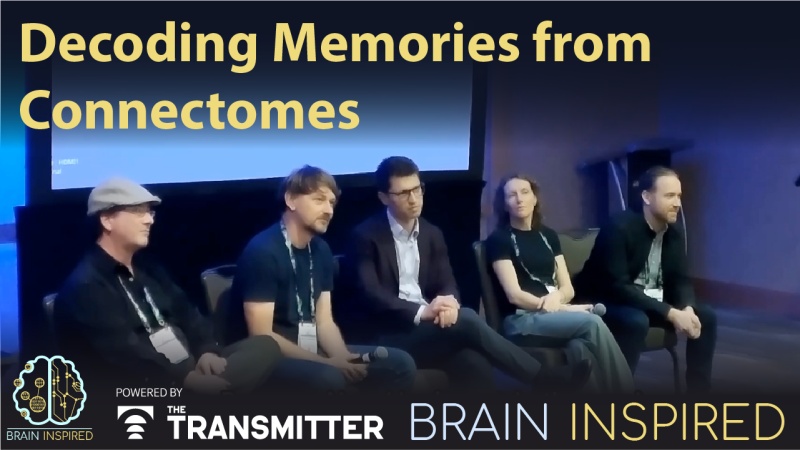
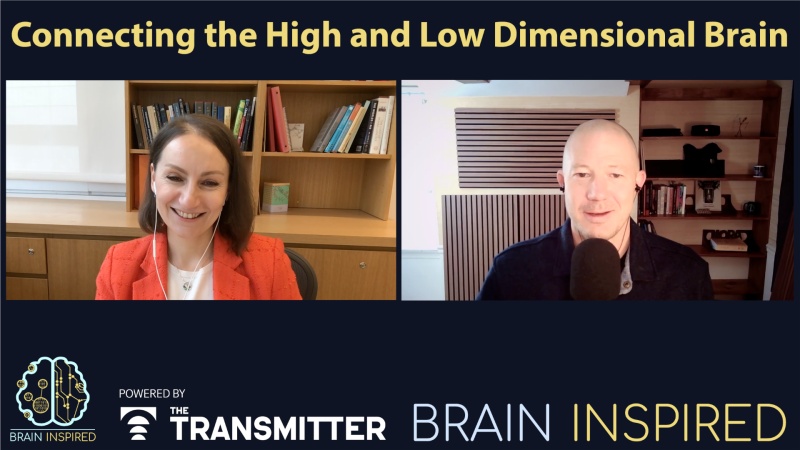


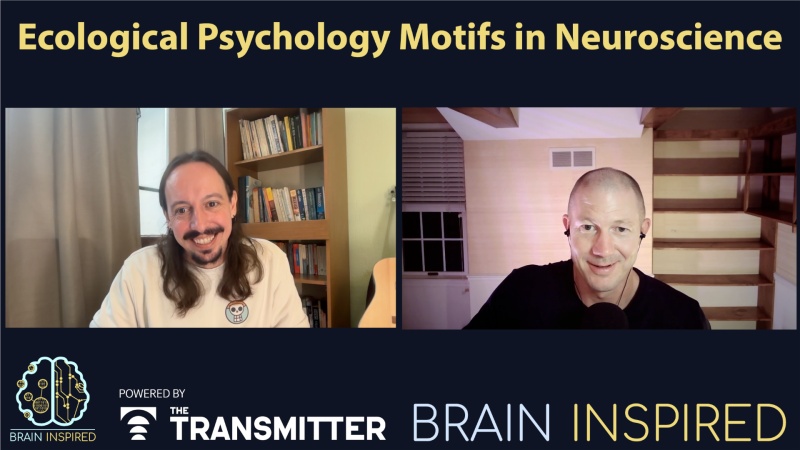

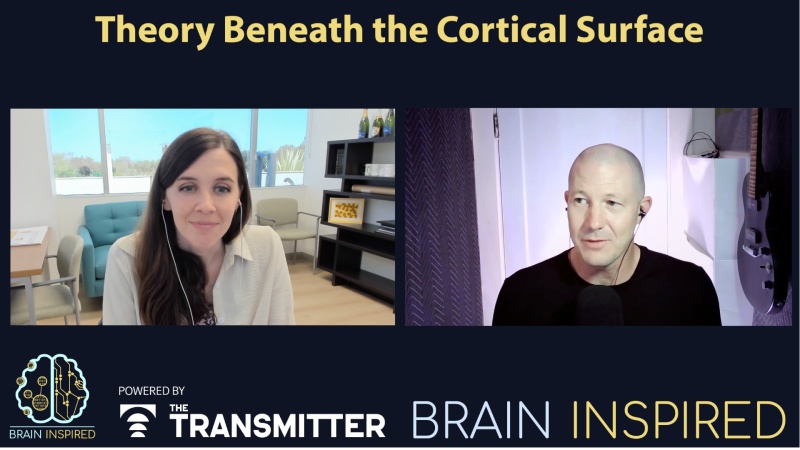







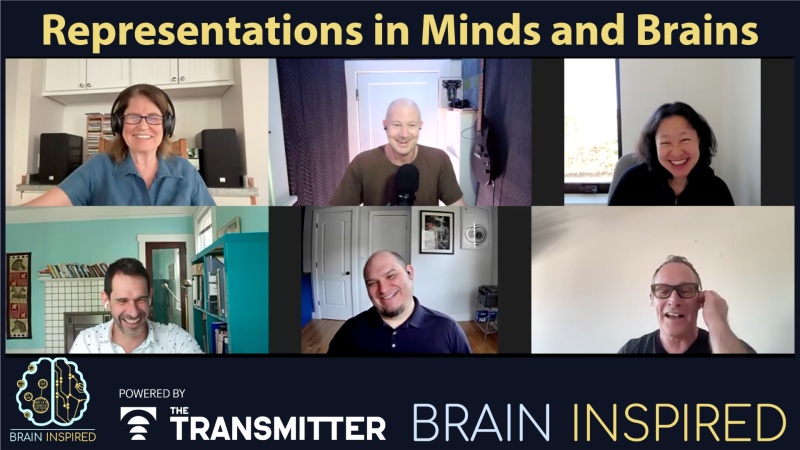
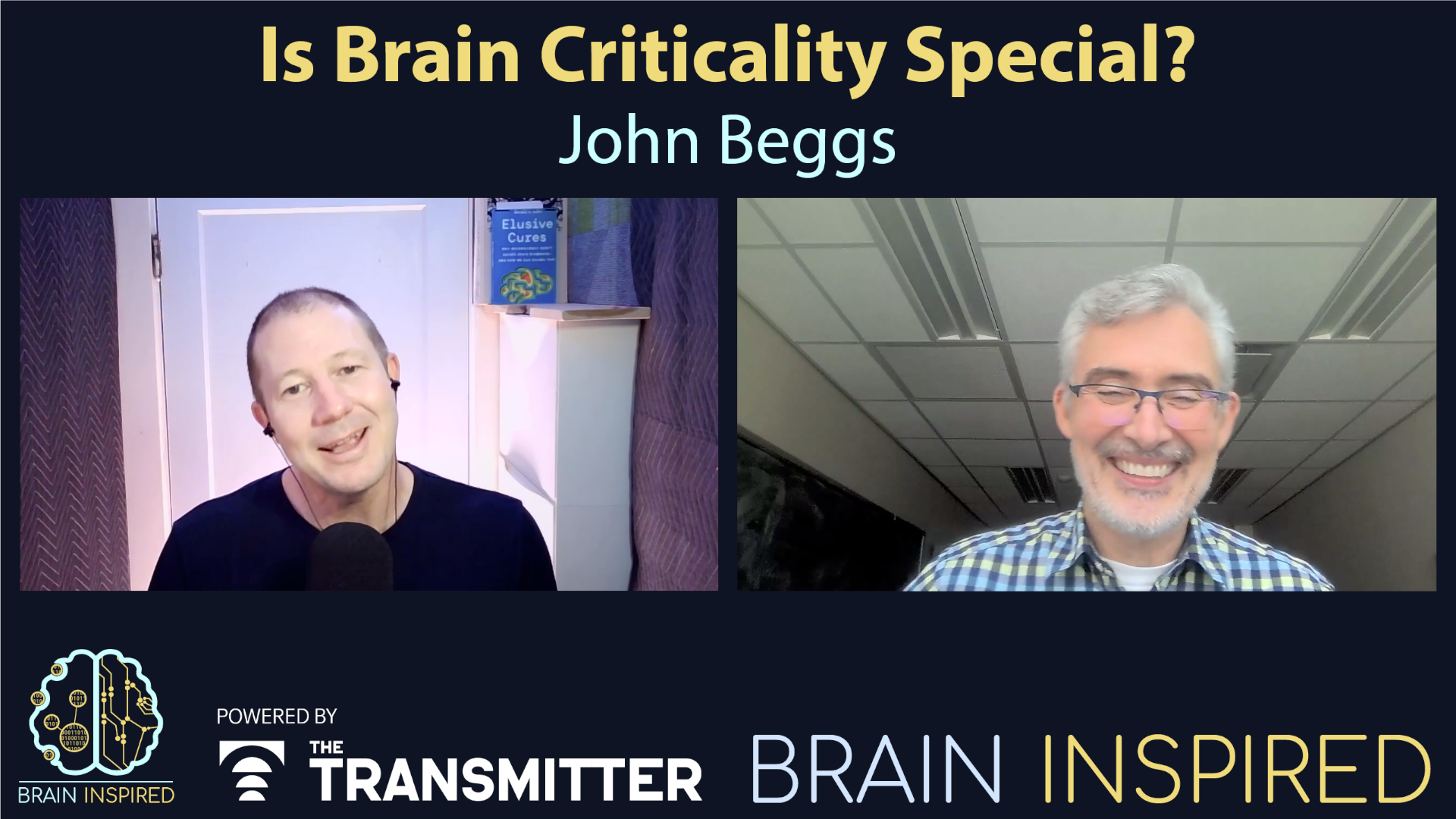


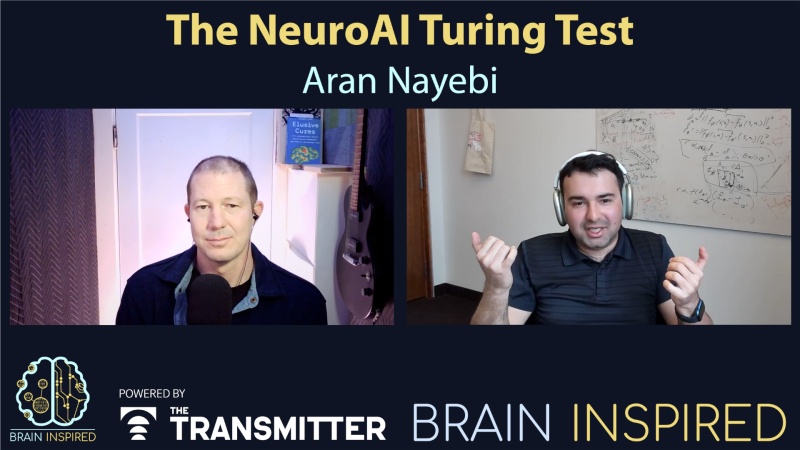
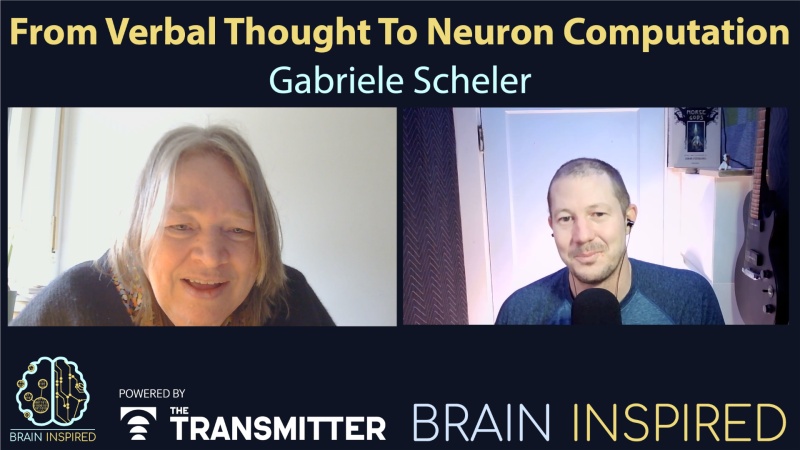



Fantastic Podcast - Goes into a fair amount of detail, whilst retaining a broad perspective on the context and potential of specific cutting-edge research - highly entertaining!